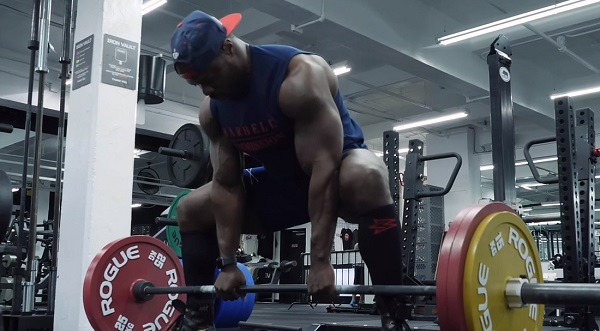To sumo or conventional deadlift that is the question…
The sumo versus conventional deadlift is a hot topic across all lifting populations. Which should you do? Should you train both? Should their strengths be equal? To answer all of those questions, we need one thing: Context. Both the sumo and conventional deadlift have multiple benefits and understanding how to use them for your best benefit can be incredibly useful.
In reality, there’s not a perfect equation for diversifying your sumo and conventional deadlift training because everyone has different goals. For most recreational lifters, training both deadlift styles is a great strategy for building well-rounded strength.
So now the question remains, how should you structure sumo and conventional deadlifts in your training? To help use answer this question, we enrolled the help of world record holding powerlifter Kevin Oak!
Sumo Or Conventional Deadlift: Which Should You Do?
Kevin Oak’s Answer: Do Both!
In the video above, Oak shares insights into why he thinks training both deadlift styles is important for both strength athletes and recreational lifters. For competitive athletes, training their non-competition deadlift can be useful for strengthening lagging and weak areas in the off-season, and recreational lifters can benefit by rotating the two deadlifts through different training blocks.
Kevin Oak’s Favorite Conventional Deadlift Tips
- Deadlift Tip #1: Flex the quads before setting.
Why: The quads play a huge role in the conventional deadlift because they’re used to push the ground away while you pull weight. Oak explains that flexing the quads helps him activate these muscles before physically setting and pulling.
- Deadlift Tip #2: Get a neutral spine positioning.
Why: To achieve a neutral spine, Oak points out that he naturally has a posterior tilt, so by tilting his pelvis posteriorly, then shifting into an anterior tilt before setting allows him get set in the best position possible. This tip may not work for everyone, but if you naturally have a posterior tilt, then it’s worth a shot.

Kevin Oak’s Favorite Sumo Deadlift Tips
- Deadlift Tip #1: Externally rotate the hips.
Why: The sumo deadlift is a very technical movement. To efficiently perform strong sumo pulls, you need to externally rotate the hips. Oak recommends externally rotating the feet and hips to achieve the best positioning possible.
- Deadlift Tip #2: Get the torso forward and upright.
Why: A torso that ‘s positioned close to the bar and in an upright position will be the most mechanically advantageous for a majority of athletes.
Wrapping Up
Whether you’re a weathered strength athlete or recreational lifter, it’s generally a great idea to train both the sumo and conventional deadlift. Instead of thinking about them as being mutually exclusive, consider how you can use both of them to strengthen one another!